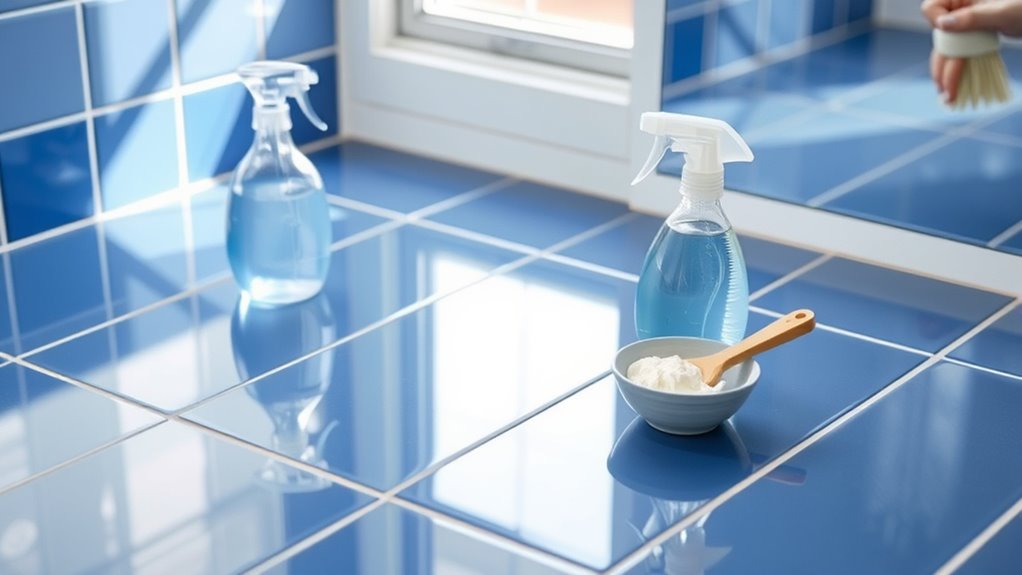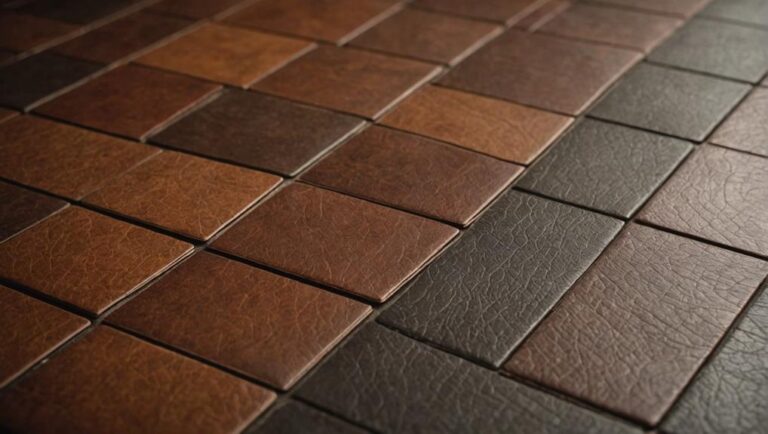To clean grout on your tile floor, first gather supplies like a stiff brush, microfiber cloths, and gloves. Next, prepare a cleaning solution tailored to your grout type—baking soda paste for cement grout or diluted vinegar for ceramic tiles. Apply the solution gently with a small brush along grout lines, then scrub thoroughly using consistent back-and-forth motions. Finally, rinse with clean water and dry completely to prevent residue and mold. Following these steps sets you up for deeper tips and techniques.
Gather Your Cleaning Supplies
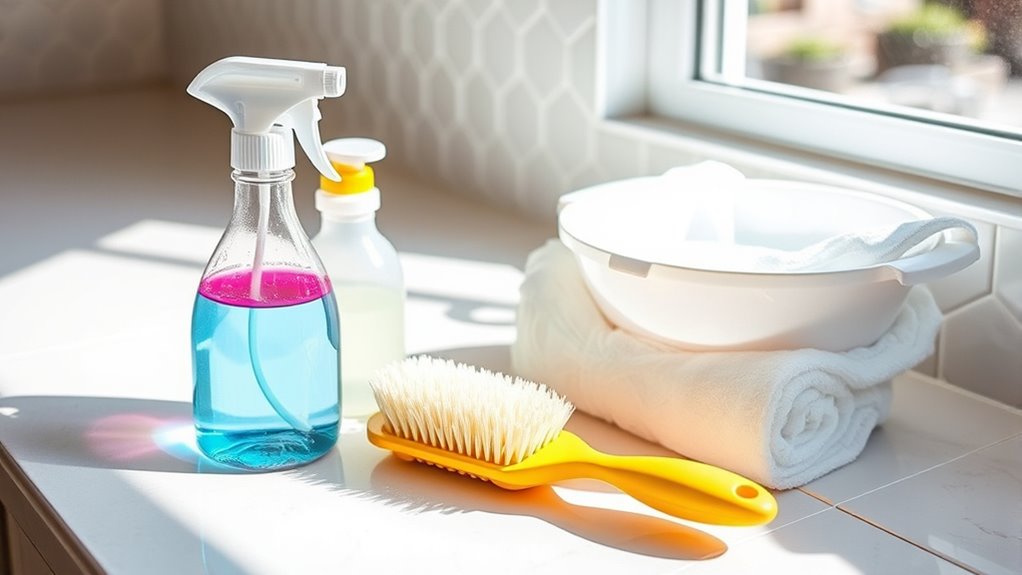
To effectively clean grout on your tile floor, you’ll need to gather a few essential supplies first. Start by selecting the right cleaning tools: a stiff-bristled brush, microfiber cloths, and a bucket will serve you well. The choice of cleaning tools is vital, as different grout types—whether sanded or unsanded—respond better to specific brushes and cleaners. Sanded grout, being more porous, requires a firmer brush to penetrate dirt, while unsanded grout demands a gentler approach to avoid damage. Additionally, gloves and protective eyewear guarantee safety during cleaning. Having these supplies ready lets you tackle grout cleaning efficiently and confidently, freeing you from uncertainty and allowing you to maintain your tile floor’s pristine condition with ease.
Prepare the Cleaning Solution
Before you start scrubbing, you’ll need to prepare an effective cleaning solution tailored to your grout type. Different grout cleaning methods call for specific mixtures, so understanding your grout’s material is key. For standard cement-based grout, a simple solution of baking soda and water creates a gentle paste that lifts dirt without harsh chemicals. If you prefer natural cleaners, white vinegar diluted with water is excellent for cutting through grime on ceramic tiles but avoid it on stone grout to prevent damage. Alternatively, hydrogen peroxide mixed with baking soda forms a powerful yet safe cleaner for stubborn stains. Measure ingredients precisely to maintain the right consistency—too watery and it won’t adhere; too thick and it’ll be hard to spread. This preparation guarantees your cleaning effort is both effective and safe.
Apply the Solution to the Grout Lines
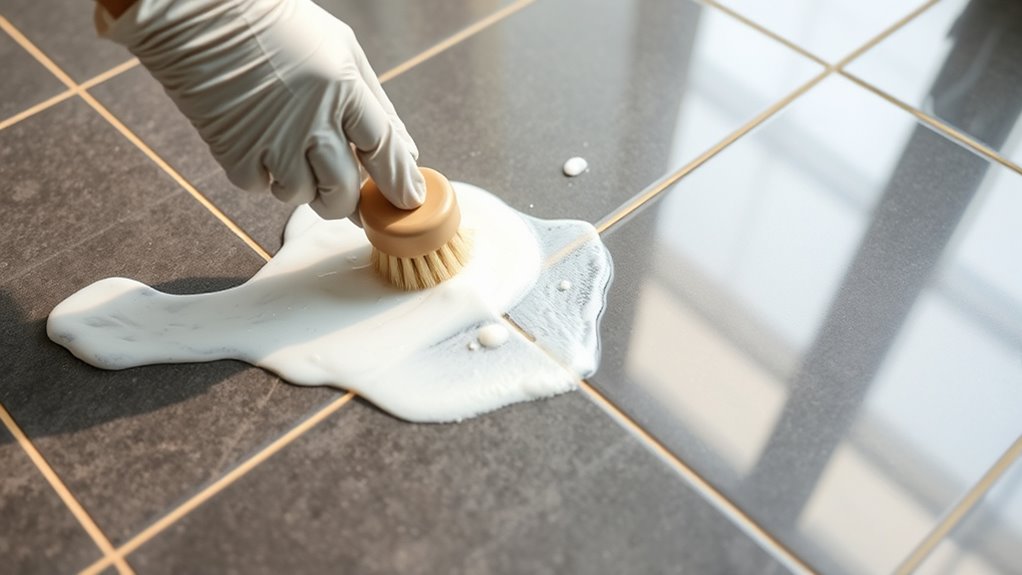
Once your cleaning solution is ready, you’ll want to apply it carefully to the grout lines. Use a small brush or a sponge to guarantee precise grout cleaning without spreading the solution onto the tile surface. Focus on even solution application, covering all grout lines thoroughly to allow the cleaner to penetrate deeply. Avoid pouring the solution directly; instead, dab or brush it on gently for controlled coverage. This method prevents excessive moisture on the tiles and targets the grout effectively. Work systematically in small sections to maintain control and maximize effectiveness. Proper solution application sets the foundation for successful grout cleaning, freeing your grout from embedded dirt and stains while preserving the integrity of your tile floor. Take your time—precision here pays off in the results.
Scrub the Grout Thoroughly
Grab a stiff-bristled brush and start scrubbing the grout lines with deliberate, even strokes. Using effective brushes is key to freeing grout from dirt and stains. Focus on consistent pressure to avoid damaging tiles while maximizing dirt removal. Here are essential grout cleaning techniques to follow:
Use a stiff-bristled brush and steady strokes to effectively clean grout without damaging your tiles.
- Choose a brush with firm, synthetic bristles for durability
- Apply cleaning solution evenly before scrubbing
- Work in small sections for thoroughness and control
- Use a back-and-forth motion along grout lines
- Rinse the brush frequently to prevent redepositing grime
Rinse and Dry the Tile Floor
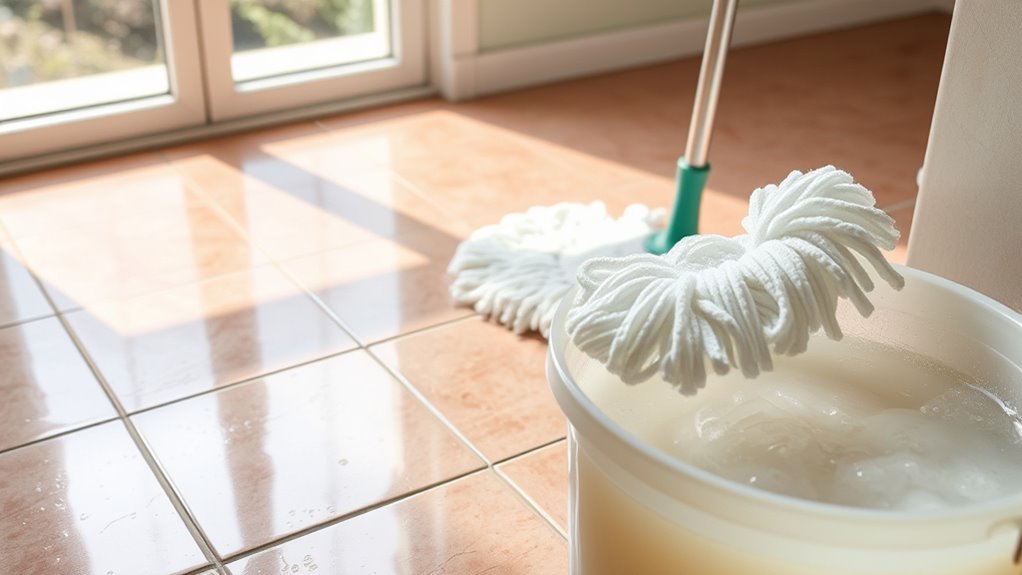
Several thorough rinses are essential to remove any leftover cleaning solution and loosened dirt from the grout and tile surface. Start by using a mop or sponge soaked in clean, warm water to rinse the floor, changing the water frequently to avoid redistributing grime. Proper rinsing prevents residue buildup, a vital grout maintenance tip that preserves grout integrity. After rinsing, dry the tile floor completely with a clean microfiber cloth or towel to prevent water spots and mold growth. This step is a fundamental tile care essential, ensuring your floor stays pristine and damage-free. By following these precise rinsing and drying practices, you maintain the freedom to enjoy a spotless, well-cared-for tile floor without lingering dirt or moisture issues.

